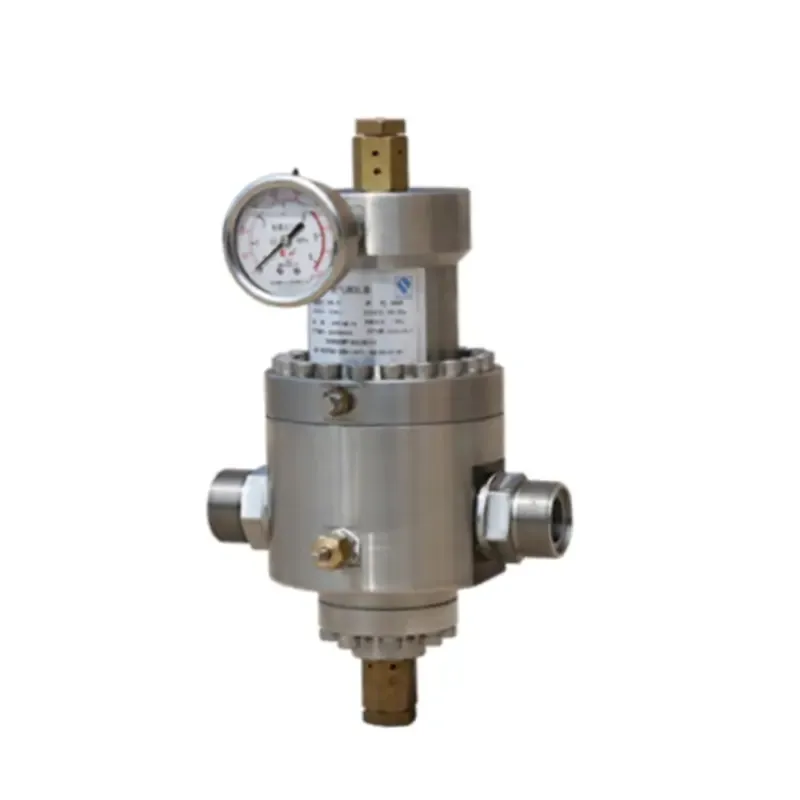
Oct . 14, 2024 03:13
Back to list
shut-off valve
Understanding Shut-Off Valves Essential Components in Fluid Control
Shut-off valves are critical components used in various industrial and residential applications to control the flow of liquids and gases. These valves are designed to completely stop or permit the flow of fluids through pipes, ensuring safety and efficiency in various systems. Understanding their functions, types, and importance can help in selecting the right valve for specific applications.
At its core, a shut-off valve serves as a gate that can open or close to direct the flow of a fluid. When the valve is closed, it creates a barrier that prevents any fluid from passing through, effectively stopping the flow. Conversely, when the valve is open, fluid can flow freely, enabling processes to continue smoothly. This simple yet efficient mechanism is vital in industries like water treatment, oil and gas, chemical manufacturing, and HVAC systems.
There are several types of shut-off valves, each designed for particular functions and applications. The most common types include ball valves, gate valves, globe valves, and butterfly valves. Ball valves are renowned for their durability and reliability, featuring a spherical disc that controls flow. Gate valves, on the other hand, utilize a sliding gate mechanism ideal for on/off control rather than throttling. Globe valves offer excellent throttling capabilities, making them suitable for situations where flow regulation is necessary. Lastly, butterfly valves are lightweight and compact, making them ideal for larger pipelines where space is a concern.
shut-off valve

In addition to their function in controlling flow, shut-off valves play a crucial role in safety
. In emergencies or maintenance situations, quickly shutting off the flow of hazardous materials can prevent accidents and minimize risks. For example, in natural gas distribution, any leak can pose significant dangers, and the ability to rapidly isolate sections of piping can be critical for safety personnel.Moreover, regular maintenance of shut-off valves ensures their functionality and prevents leaks or failures. It is essential to inspect these valves periodically, checking for signs of wear and tear, corrosion, or instances where they may not seal correctly. Implementing a robust maintenance schedule can extend the lifespan of the valves and enhance the overall reliability of fluid systems.
Choosing the right shut-off valve involves considering several factors the type of fluid being transported, pressure and temperature conditions, and the specific industry standards applicable. The correct valve not only improves efficiency but also aligns with safety regulations and operational requirements.
In conclusion, shut-off valves are indispensable in managing the flow of fluids in various systems. Their diversity in design and functionality makes them suitable for many applications, from residential plumbing to complex industrial processes. Understanding their types, functions, and maintenance is crucial for anyone involved in fluid management, as it ensures safety, efficiency, and longevity of the systems they operate within. As industries continue to advance, the role of shut-off valves will remain pivotal, underscoring the importance of these simple yet vital components in our everyday lives.
Latest news
-
Safety Valve Spring-Loaded Design Overpressure ProtectionNewsJul.25,2025
-
Precision Voltage Regulator AC5 Accuracy Grade PerformanceNewsJul.25,2025
-
Natural Gas Pressure Regulating Skid Industrial Pipeline ApplicationsNewsJul.25,2025
-
Natural Gas Filter Stainless Steel Mesh Element DesignNewsJul.25,2025
-
Gas Pressure Regulator Valve Direct-Acting Spring-Loaded DesignNewsJul.25,2025
-
Decompression Equipment Multi-Stage Heat Exchange System DesignNewsJul.25,2025

